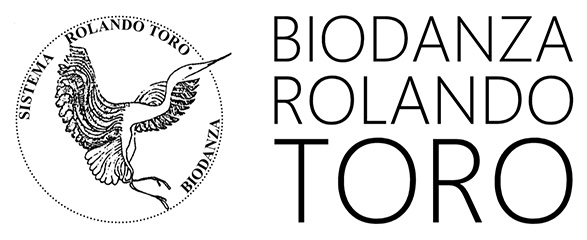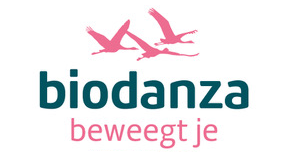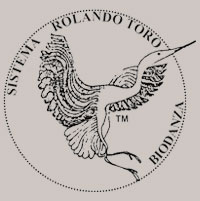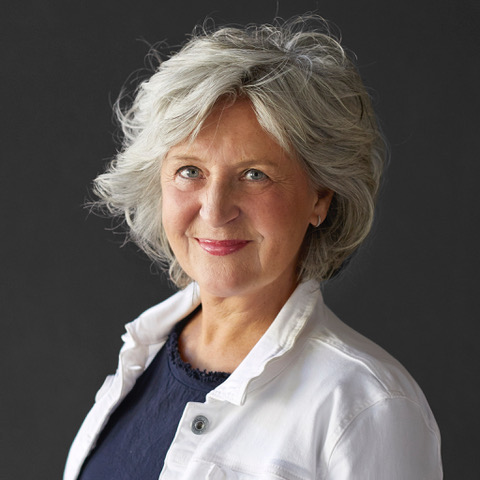.. De therapeutische werking van Biodanza door Marcelo Mur Organisatie AIPOB
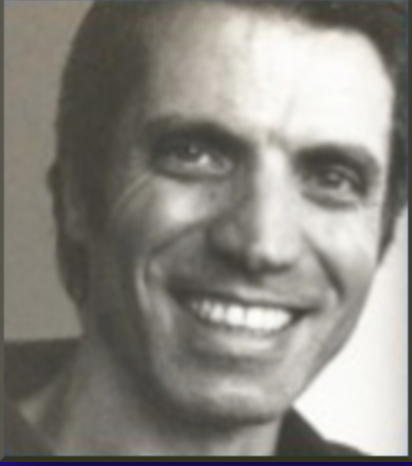 De therapeutische werking van Biodanza:
De therapeutische werking van Biodanza:
Voor AIPOB gaf ik drie jaar geleden een lezing getiteld 'Biodanza tra educazione e terapia' (Biodanza tussen onderwijs en therapie). Mijn doel was om de betekenis van de termen onderwijs en therapie te onderzoeken in het licht van wat Rolando Toro schrijft en ook in het licht van mijn eigen ervaring als student en docent.
De therapeutische werking van Biodanza
Met deze nieuwe lezing wil ik het feit onderzoeken dat Rolando Toro Biodanza geen therapie noemt; hij beschrijft echter wel de therapeutische werking van Biodanza. Wat betekent dit?
Hoe ervaar ik Biodanza vanuit dit oogpunt?
Als leerling, deelnemer ervaren we de vivencia van integratie. We voelen het leven in ons stromen met een grotere intensiteit en spontaniteit. Er ontwaakt een nieuwe gevoeligheid voor het leven. We ontdekken nieuwe voorkeuren. We nemen nieuwe beslissingen. We zien ons leven ten goede veranderen en genieten ervan. Dit proces wordt in principe bereikt door te leven.
De overgang om een docent/opleider te worden begint met een sterke motivatie om anderen in hetzelfde proces te begeleiden. Dit vraagt van ons een diepe verandering: van Biodanza voelen naar Biodanza denken. Denken over de theorie en methodologie ervan, en ook denken over de veranderingen die in ons zijn opgetreden dankzij de stimulansen en acties van Biodanza.
De praktijk van Biodanza verandert ons
De beoefening van Biodanza verandert ons: dat is een feit. Maar, hoe ben ik veranderd door Biodanza? Welke rol speelden de ontmoetingen in Biodanza? Is het mogelijk om te genezen met Biodanza?
Hoe ben ik veranderd door andere, niet-Biodanza interventies?
Ik zal mijn persoonlijke ervaring delen. Marcelo Mur
Marcelo Mur, 64 jaar, vijfjarig diploma Psychologie (Buenos Aires, Argentinië, 1987), ingeschreven in het beroepsregister van de Orde van Lombardije onder nr. 03/13010 sinds 01/10/2009. Docent Bodily Expression, een hedendaagse danstechniek gebruikt in het kader van danstherapie (Buenos Aires, 1983). Diplomaat in Biodanza Sistema Rolando Toro (Buenos Aires, 1981) met veertig jaar ervaring in het leiden van groepen volwassenen in zowel groei- als professionele trainingsprocessen. Ik heb ook ervaring met groepen gehandicapten, groepen individuen met psychische nood, groepen jongeren en kinderen gediagnosticeerd in het autistisch spectrum, groepen basisschool- en kleuterschoolleerlingen. Directeur van de Biodanza Original Professional Training School in Genua (2004). Medewerker van Prof. Rolando Toro Araneda van 1976 tot 2010. Docent op het 1e niveau Master's Degree Course "Relationships and feelings in the educational and care professions" over Emotioneel bewustzijn en lichamelijkheid, aan de Università Cattolica (Piacenza, 2008, 2010, 2011).
----------------------------------------------------------------------------------------------------------------------------------------------------------------------------
summary of this really interesting conference
Good afternoon. I am delighted to meet with you. I thank AIPOB for the trust and the opportunity it provides me to discuss this topic: The therapeutic action of Biodanza. Why this topic?
Although the term "therapy" is absent from the definition of Biodanza, both in the Biodanza book and in various handouts from the Biodanza Operator Training, authored by Rolando Toro, there are references to therapy and the therapeutic action of Biodanza.
I wondered: What do these references mean?
Let's begin with the definition of therapy and therapeutic action. According to dictionaries, an action is therapeutic when it deals with or fights a disease. Therapy, derived from Greek, means to cure, heal, assist, thus relating to a person who is unwell.
Rolando Toro defines Biodanza as a system of human integration. His method involves stimulating the experience of integration through music, singing, movement, and group encounters. This implies that Biodanza works on the healthy aspects of individuals.
Therefore, Rolando Toro does not categorize Biodanza as a therapy in the specific sense of combating a disease. However, Biodanza exercises, some more than others, can have therapeutic effects by promoting the expression of emotions.
I envision a Biodanza session for beginners. Following the theoretical introduction, I invite participants to form a circle and dance together or walk individually—two exercises with rhythmic music I typically suggest for beginners. After the rhythmic walk, I might suggest a rhythmic dance or a rhythmic coordination in pairs (walking together). At this point in the session, after overcoming any initial awkwardness in the circle (stemming from the possibility of looking at others and being looked at), after the potential unease of the rhythmic walk (beginners often wonder: am I keeping the beat? am I going in the right direction?), after these initial moments, without fail, I find myself affirming that some participants spontaneously express joy.
The joy of engaging in a simple activity alone or with another person. These expressions of joy tend to intensify after a rhythmic synchronization in pairs and a group vitality game.
These spontaneous expressions of joy are therapeutic effects: the emotion begins to flow through the body again. It is the manifestation of the individual's life.
Over time and through practice, the Biodanza student discovers additional facets of joy, beyond the fundamental, immediate joy generated by movement alone, in pairs, or in a group—what Rolando Toro termed "vital impetus." In Biodanza, we have the opportunity to experience:
- Affective joy: a tender joy generated by the perception of opening oneself to the world.
- Erotic joy: a visceral, intimate joy generated by deep contact with one's own sexualized being.
- Creative joy: a complex joy generated through effort: integrating rhythmic and melodic movements, voluntary and involuntary movements; exerting effort to express the emotional content of music; making an effort to convey the symbolic message of a piece of music.
- Transcendent joy: an ecstatic joy arising from the perception of being in connection with the totality of life.
Always bear in mind that the Biodanza methodology is not about stimulating the expression of emotions but rather inducing the experience of integration, which often gives rise to emotions.
Opening the Training Manual for Biodanza Methodology II – The Biodanza Session, a text written by Rolando Toro, on page 15, states: "These exercises [to release chronic tensions] can be proposed as an alternative to those of Extension and Fluidity, at the end of the first part of the session. This alternative has a more therapeutic dimension. (...) Segmental Movements, Abdominal Breathing, and Dancing Breathing exercises are designed to release chronic tensions at various levels.”
What does this statement mean?
It signifies that the dissolution of chronic tensions releases emotions (which were trapped in those tensions). Consider Wilhelm Reich, particularly his book "Character Analysis."
I recall shedding tears during exercises like Segmental Movement of the Neck, Segmental Movement of the Shoulders, and Segmental Movement of the Chest-Arms set to melodic music. On those occasions, I spontaneously expressed SADNESS.
I remember becoming sexually aroused during the Segmental Movement of the Pelvis exercise set to melodic music. On those occasions, I spontaneously expressed EROTICISM, PLEASURE, JOY.
The spontaneous expression of emotions, within the context of Biodanza sessions, I regard as therapeutic effects.
I asked myself: When did these expressions of emotions happen to me? At which moments in my evolutionary process in Biodanza? I cannot answer this question with certainty, but the observation of my weekly course students suggests that emotional expressions following the dissolution of chronic tensions do not occur at the beginning of the journey.
Another question I pondered: Has every therapeutic effect endured over time? I answered myself: Unfortunately, no. I needed to relive those experiences and undergo other experiences, both during sessions and in daily life, before achieving internal maturation. For instance, the joy of movement, vital impetus, and other qualities of joy needed to be relived many times during sessions before feeling them truly integrated. Additionally, I am clear that specific existential experiences contributed to this success. Without them, my joy manifested mostly in the here and now of sessions and occasionally in individual experiences in daily life.
Now, I will examine other statements by Rolando Toro regarding the therapeutic action of Biodanza: In the book "Biodanza," in the chapter "Elements of Methodology," under the title "Contact and Caress," it reads: "In Biodanza, we consider the function of contact as therapeutic because it can dissolve chronic muscle tensions. (...) It's important to understand that contact itself is not therapeutic. It must occur within a progressive process of emotional communication and empathy, reaching the quality of a caress. In Biodanza, the vivencias of affectionate contact during a gentle trance state allow participants to relearn primal eros and become more aware of their capacity to caress and be caressed."
"Contact is the most important therapeutic action. Finding ways for everyone, from children to the elderly, to have access to caresses is perhaps the only 'revolution' that makes sense."
I remember shedding tears while receiving caresses during the Regression to Childhood state exercise for face caressing. On those occasions, I spontaneously expressed SADNESS.
I remember becoming sexually aroused while receiving and offering caresses during reciprocal caress exercises. On those occasions, I spontaneously expressed EROTICISM.
I recall the feeling of TENDERNESS, perceiving my abilities to protect and allow myself to be protected during the Encounter with Embrace exercise and also during the Minute of Eternity exercise.
I remember the pleasure and emotion of holding hands and being held during the Circle exercise, feeling a sense of BROTHERHOOD, mutual support, community, unity.
All of these experiences I have described are vivencias of integration, which, due to their intensity, often generate emotions, expressiveness, and impulses to action. As I mentioned earlier, even these vivencias, these experiences, these emotions, I needed to relive multiple times before feeling them truly integrated, before making them my own.
I'd like to pause for a moment to emphasize the transformative power of vivencia. In the book "Biodanza," under the title "Characteristics of the Vivencia," it states: "Temporality: The vivencia is fleeting. It manifests in the present moment and constitutes an experience of 'current genesis,' in the sense of the concept proposed by Alfred Awersperg to refer to the continuous creation of life that occurs in living organisms."
I take this opportunity to recommend the reading of "Anthropological Aesthetics: Toward a Poetics of the Human" by Viviana Luz Toro Matuk. It's a book about Biodanza within the context of anthropology—a beautiful and incredibly interesting book. I want to highlight three chapters: Current Genesis, Vivencia, Instincts. These themes are expertly explored by Viviana. The chapter on Current Genesis begins as follows: "One of my father's dearest personal and theoretical references was what he pompously called 'el Principe Auersperg,' his professor at the School of Medicine, from whom he claimed to have drawn inspiration to develop his concept of vivencia." Viviana Toro Matuk continues her father's legacy with love and clarity.
While vivencia has the power to transform us, let's remember that these transformations need to be repeated over time to stabilize within the living system that each of us is.
Methodologically, the vivencia is generated through the integration of music and movement, sometimes involving interaction with others. When the music ends, so does the exercise and the guided stimulation. The Vivencia, without the stimuli of music and movement, naturally tends to lose intensity.
The stimulation of the vivencia is the strength of Biodanza, which, like all systems of human growth, needs to be practiced to continue reaping its benefits. It's crucial to practice it in the studio with fellow members of the weekly group, and it's equally important to practice it outside the studio with family, friends, neighbors, with everyone.
As Rolando Toro states in the Training Manual for Biodanza Methodology V – The Biodanza Group, on page 16: "The procedures of Biodanza must be progressively applied in one's family relationships, in work, and in the social environment in general."
So, the vivencia changes us. But how does Biodanza act? What are the mechanisms of action of Biodanza? Exploring the answers to these questions will allow us to delve deeper into the understanding of what I have attempted to communicate so far.
In the Training Manual for Biodanza Operators - Mechanisms of Action of Biodanza, in the Preface, it reads:
"How does Biodanza act on human life?
What are the mechanisms of action that induce organic and existential changes? (...)
How is it possible that through dances and exercises, psychosomatic symptoms and illnesses can be treated, and the quality of life can be elevated? (...)
These questions can find an answer when the theoretical foundations of the Biodanza System are understood.
The dances and ceremonies of Biodanza have been conceived to induce new forms of communication, stimulate the expression of identity, achieve emotional re-education, integrate organic unity, and induce processes of expanded perception and ethical consciousness. Biodanza directs its objectives towards the global functions of integration."
Rolando Toro lists ten mechanisms of action in Biodanza, but I'll describe just four:
- "The fundamental mechanism of action in Biodanza is the stimulation of integrative vivencia through music, singing, dance, and group encounters. (...)
Vivencias in Biodanza have an integrating power within themselves and do not require conscious elaboration; they are a form of cognition at the unconscious level." This statement encapsulates a crucial aspect of Rolando Toro's method.
- "Exercises are organized to generate an individual and communal 'process of change.' For this reason, continuous practice of Biodanza until its effects stabilize is important."
- Facilitation of Group Interaction / Relational Function: "Biodanza is a group activity. Through interaction with others, the growth process is initiated. Biodanza (…) stimulates (…) the expression of identity through human relationships (…)"
Now, let's further delve into the theme of this conference:
- Mechanisms of Therapeutic Action and Existential Rehabilitation of Biodanza:
Rolando Toro writes: "Through trance, it is possible to restore normal patterns of physiological response when these have been replaced by dysfunctional patterns incorporated during conditioned growth under a pathological lifestyle. Regression exercises through trance have the following effects:
- Restoration of physiological response patterns.
- Biological renewal: It is proven that every emotional response influences the three systems of organic integration. In particular, the action of Biodanza is observed in the regulation of blood pressure (N.S.), activation of sexual function (S.E.), and increase in antibody levels in the blood (I.S.).
- Rebirth experience: after a deep trance, a Biodanza student can emerge with an expanded consciousness to the point that the lived experience takes on the character of a moving self-discovery. Aspects of identity that remained hidden may be revealed. It's an insight. It changes the way of self-perception, becoming deeper and more fulfilling. It leads to a new understanding. The need to make other choices arises.
- Reparentalization (modification of response patterns acquired during childhood in relation to parents): This mechanism involves progressively replacing anti-life cultural values by modifying attitudes, behaviors, ways of relating to others acquired within the family context. Specifically, we address the stress of early childhood due to maternal or paternal abandonment, which hindered the individual from establishing the 'primary bond.' This results in a weak, poorly structured identity. Biodanza acts as compensation for any deficiencies in emotional care originating in childhood, fostering a new emotional balance. The fundamental exercise is the Regression to the infantile state through face caressing. The one offering caresses symbolically takes on the role of father or mother (depending on whether they are a man or woman), while the one being caressed assumes the role of a newborn."
Rolando Toro concludes: "The therapeutic mechanisms of Biodanza act by stimulating the healthy part, the functions of integration. In this way, difficulties, failures—and even the horror that existence entails—can be averted, compensated, and transformed."
Moving forward. In the Training Manual for Biodanza Operators titled "Biodanza Ars Magna," it states: "It is not man at the center of the universe, but life (…) the cosmic apotheosis of beauty and indescribable terror is not ours; grace and love are forces that we can only receive through expanded perception.
If Biodanza leads us to the Art of Living, it invites us to the grand cosmic dance; its resources are also universal: rhythm and musical harmony, organic movement, creation, and loving encounter."
Rolando Toro has experimented with the application of Biodanza in clinical settings for individuals with psychosomatic illnesses, psychiatric disorders, gastrointestinal issues, eating disorders, Parkinson's syndrome, among other pathologies. He named it Clinical Biodanza and defined it as "Biodanza as a system of existential rehabilitation complementary to clinical practice." He did not label it as therapy.
By placing the action of Biodanza in relation to illness and health, Rolando Toro emphasizes the specificity of his methodology—inducing vivencias of integration and emotional re-education in a pedagogical context.
Rolando Toro offers another definition of Biodanza: "A poetics of human encounter." How many couples have formed in Biodanza courses?! And how many more will form?! The poetics of the encounter fosters this: falling in love and love itself. In the formation of a couple, both individuals leave a state of solitude and/or misunderstanding, dissatisfaction, frustration in the emotional and erotic relationship with the other, and discover understanding, complicity, trust, reciprocity, love. This outcome carries within itself the relief from a state of suffering, something that we could define as a therapeutic effect, risking, however, diminishing the grand scope of this extraordinary opportunity to form a couple on a non-verbal, affective basis. I know many companions and colleagues who have formed couples with fellow Biodanza participants or students, starting with Rolando Toro himself, and then many others—including myself—a fact so evident that, in my opinion, deserves to be emphasized.
Rolando Toro did not consider Biodanza as therapy, but he did not rule it out. He proposed the Minotaur Project, the therapeutic approach of the Biodanza System.
Attention, colleagues interested in therapy: Here we are in a specific context! In the book Minotaur Project, in Part One, Chapter 1, it reads: "The Minotaur Project allows the participation of the 'ill of civilization' in their own healing process."
We notice that Rolando Toro does not write "growth process" but "healing process" in this new context, specifically therapeutic. In this setting, the participant is invited to identify their cultural FEARS, and once again, we realize that the work on EMOTIONS is explicit. FEARS that the facilitator will later suggest facing with a CHALLENGE. In this way, the participant brings their psychic conflict into the present. Clearly, this is therapeutic work: seeking relief from suffering and, if possible, healing an illness. As previously mentioned, here we address "illnesses of civilization."
Furthermore, one of the central themes of the Minotaur Project is the "processing of anger and suffering." In this context, the emotional work is explicit. The challenge to one or more FEARS usually generates a vivencia much more intense than those experienced during regular Biodanza sessions. A vivencia that requires more time and care to be processed and assimilated. That's why it is necessary to practice Biodanza both before and after the Minotaur Project; both form a unique working system. The challenge goes deeper into the Biodanza exercise. Participants in the Minotaur Project may feel destabilized during this process because it significantly increases contact with their vulnerability. In this context, the expression of pain is much more intense; cries, desperation, reach highly expressive levels.
Poetically, the Minotaur Project is a descent into one's profound darkness, only to ascend again, bringing oneself into the light.
I have aimed to draw your attention to the therapeutic action of Biodanza.
In my previous conference for AIPOB, "Biodanza between education and therapy," I shared my challenges in communicating Biodanza. I began practicing it because I enjoyed dancing in this way and because there was no verbal communication. On the journey to becoming an operator, I had to train in this challenging function, which is effectively communicating Biodanza, and I continue to practice.
Since 2005, with a law from the Lombardy Region in Italy, we have found a non-medical professional context in which to practice: the field of Bio-Natural Disciplines, the field of well-being practices. I consider it a significant advancement for all of us operators, as from the beginning, Rolando Toro had placed Biodanza within his concept of Biocentric Education, thus in a pedagogical context. I find it professionally appropriate to use a language different from that of healthcare, speaking, for instance, about stimulating individuals' resources, encouraging their potentials.
In any case, I believe it is crucial for the operator to have a clear understanding of the responses they can activate in their students using the specific tools of Biodanza, namely, the expression of emotions, thus achieving a therapeutic effect.
THE DANCE
The dance births itself
like a jasmine
in the wintry breeze.
It emerges gently at the start
and transforms into a hurricane
sustained only by the arms
that rise.
The lush tree of the world
offers its ultimate fruit
the dancer in their ritual
of total abundance.
